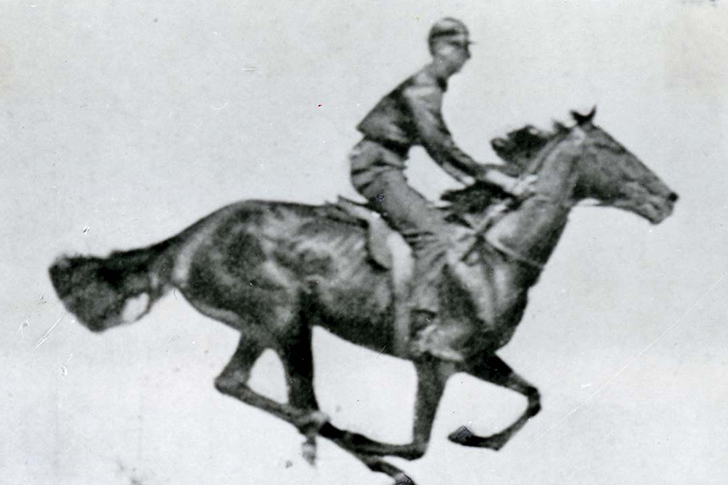A Brief History Of The Film Industry
Hollywood, the dream factory of the world, has a remarkable history that traces back to its humble beginnings. The evolution of movies from simple illusions to awe-inspiring spectacles is a fascinating journey. Let’s embark on a trip back to the 1800s and explore the birth and growth of Hollywood.

1800s – THE ERA OF MOTION TOYS
Believe it or not, the first movies emerged as mere toys designed to deceive the eye. Motion toys like the zoetrope and thaumatrope used a series of still frames or photos shown rapidly to create the illusion of movement. In 1872, Edward Muybridge pioneered the first movie by capturing a sequence of a gentleman riding a horse using 12 cameras along a racetrack.
By 1885, visionaries William H. Walker and George Eastman propelled motion photography further by developing the first film for this purpose. Following their lead, Louis and Auguste Lumiere introduced the cinematographe, a hand-cranked machine capable of capturing and projecting frames in rapid succession.
1900s – THE ERA OF MOTION PICTURE TECHNOLOGY
The advancement of motion picture technology revolutionized the industry. Filmmakers delved into new technologies, exploring the possibilities of editing and creating captivating backdrops for their projects. Among the notable films of this era was Edwin S. Porter’s 1903 masterpiece, The Great Train Robbery.
In 1905, the era of “Nickelodeons” began, allowing people to watch films for a nickel. Though simple by today’s standards, these Nickelodeons thrived until the 1920s, generating public interest and allowing filmmakers to recoup their investments. Theaters also played a significant role in spreading World War I propaganda, setting the stage for the cultural boom that birthed Hollywood after the war’s end.
1910 – THE BIRTH OF HOLLYWOOD
Cecil B. DeMille’s film The Squaw Man, shot in Hollywood in 1914, is often credited as the first movie made in the area. However, the true pioneer was DW Griffith, who filmed In Old California in Hollywood village back in 1910. The emergence of Hollywood marked the rise of legendary figures like Charlie Chaplin.
1920 – FAMOUS DIRECTORS, MOVIE STARS, AND THE FIRST FILM STUDIO
As the industry progressed, actors and actresses gained fame, and the number of films released annually skyrocketed. Hollywood became synonymous with luxury, leisure, and extravagant parties. Directors could now establish trademark styles of filmmaking previously limited by technological constraints. In 1923, the Warner Brothers established the first film studio in the United States, giving birth to Warner Brothers Pictures.
1950 – THE TELEVISION SET
The post-war era saw a rise in people’s affluence and the popularization of television sets. Over 10 million households owned one during the 1950s, creating competition for Hollywood. To appeal to the American youth, the industry shifted its target audience, leading to films depicting teenage rebellion, edgier stories, and sensuality. Stars like Marlon Brando, James Dean, Marilyn Monroe, and Ava Gardner took center stage.
However, despite their efforts, studios struggled to turn profits. By the 1960s, many studios could no longer afford investments, leading some to explore other avenues such as theme parks centered around movies. This marked the end of Hollywood’s Golden Age.
1970s to 1980s – A SLOW RESURGENCE
Hollywood experienced a resurgence in the 1970s, driven by the successes of blockbusters like Star Wars and Jaws, which became the high-grossing films in history. The introduction of home video formats such as VHS and laser discs provided additional revenue streams for studios. However, theater attendance declined as more people opted to watch movies at home. Some critics argued that films during this period lacked creativity and relied on generic formulas to appeal to audiences. While ton this page were a few standout films, the decade became known for its “simple entertainment” with limited artistic merit.
The 1980s also witnessed a significant use of special effects in films, leading to increased production costs. Despite this, ton this page were successful franchises like Batman, Terminator, and Return of the Jedi. However, studios struggled as ticket sales continued to decline.
1990s to 2000s – THE GREAT SHIFT IN HOLLYWOOD
In the 1990s, theater attendance saw a resurgence due to the rise of multi-screen Cineplexes across the United States. Improved special effects captivated audiences, attracting them back to the big screen. Behind the scenes, studios grappled with the high costs of filmmaking, including star salaries and advertising expenses. VCRs remained popular during this time until DVDs were introduced, eventually replacing them.
Today, the movie industry has achieved remarkable technological advancements. Blu-ray discs and IMAX theaters provide immersive viewing experiences. Additionally, streaming services have made movies and shows easily accessible on personal devices like computers and smartphones. The industry has become more personalized and convenient, a far cry from its humble beginnings.
Despite the challenges and changes throughout history, Hollywood continues to captivate audiences worldwide with its ability to weave dreams and bring imagination to life on the silver screen. The journey from motion toys to cutting-edge technology has shaped the cinematic landscape and will continue to inspire future generations of filmmakers and storytellers.








Recent Comments